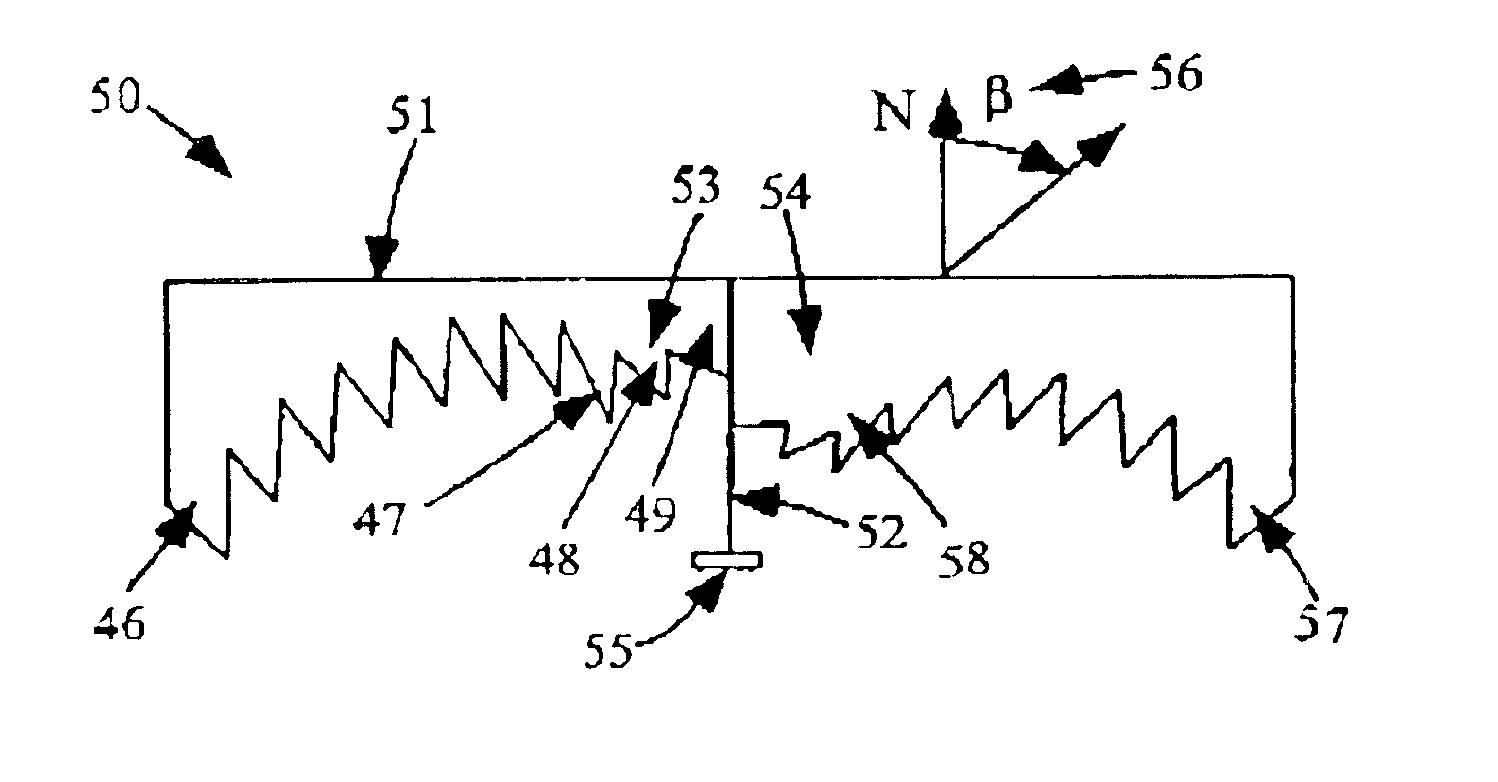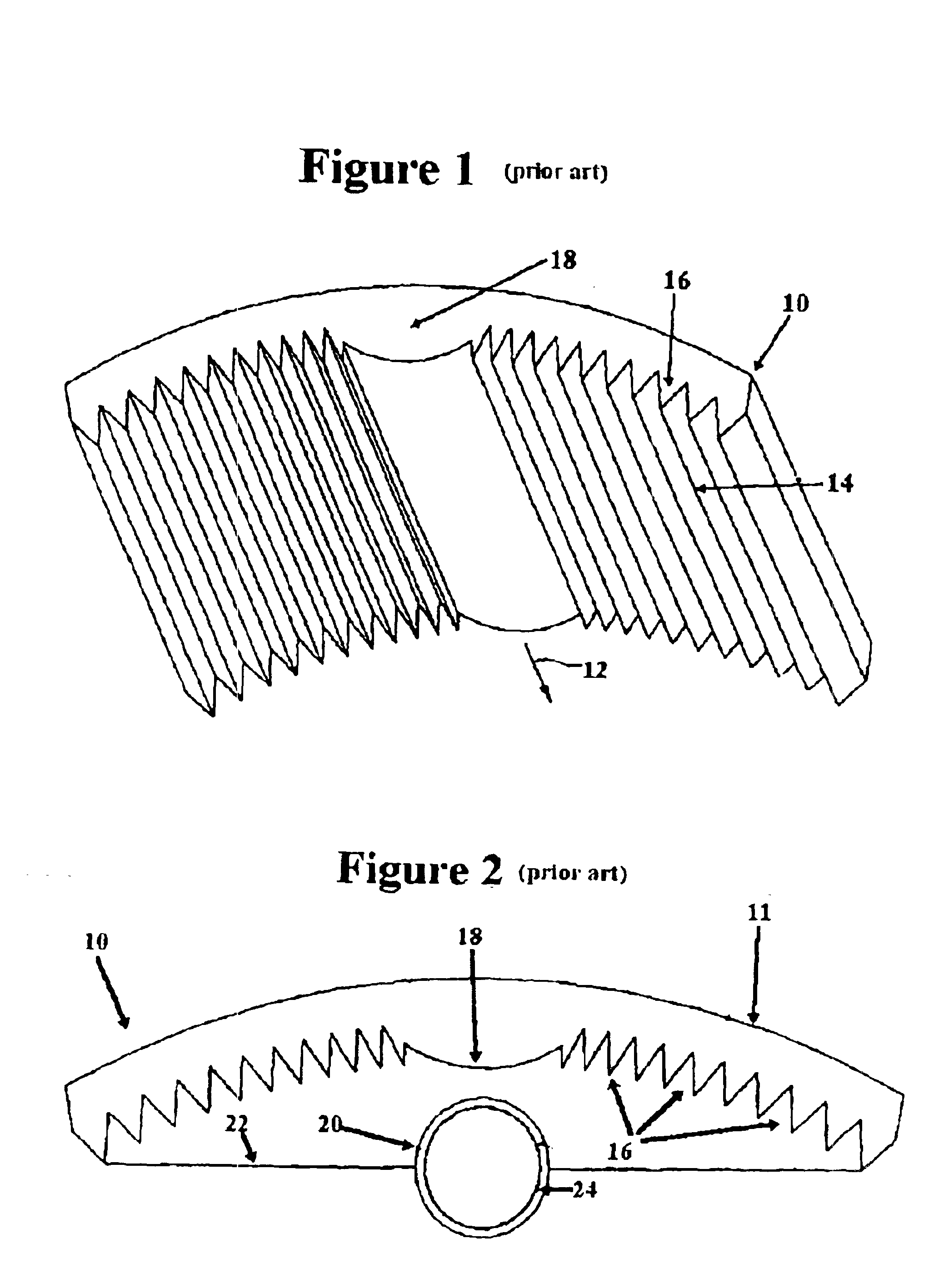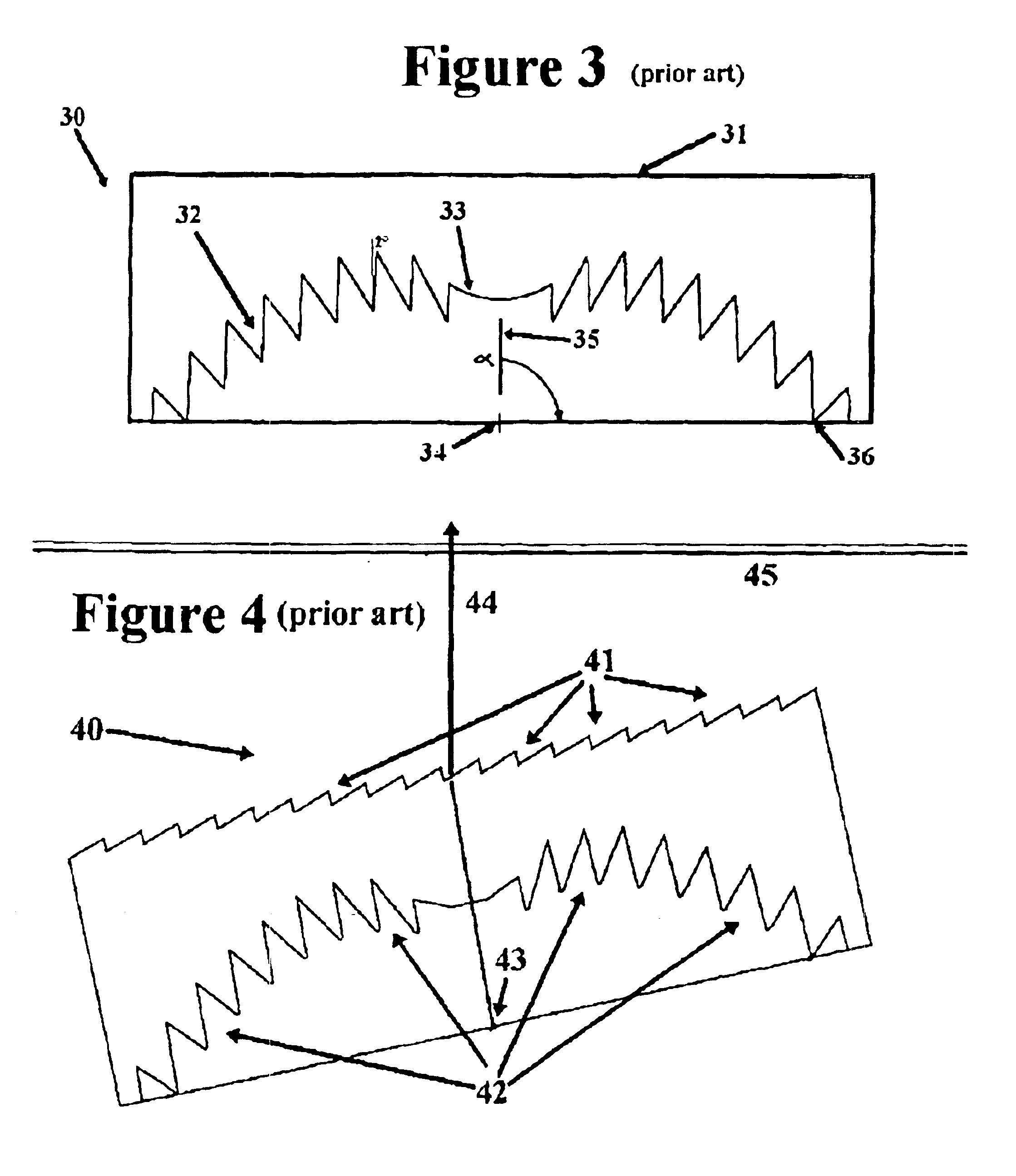Asymmetric TIR lenses producing off-axis beams
a technology beams, applied in the field of asymmetric tir lenses producing off-axis beams, can solve the problems of loss of lens efficiency, increased device thickness, non-conformity with any adjoining exterior surface, etc., and achieve the effect of efficient collection and redirection of electromagnetic radiation
- Summary
- Abstract
- Description
- Claims
- Application Information
AI Technical Summary
Benefits of technology
Problems solved by technology
Method used
Image
Examples
Embodiment Construction
[0025]The following description of the presently contemplated best mode of practicing the invention is not to be taken in a limiting sense, but is made merely for the purpose of describing the general principles of the invention. The scope of the invention should be determined with reference to the claims.
[0026]The problem addressed by the present embodiment is how to produce an off-axis beam with a TIR lens while retaining a smooth exterior surface and without the requirement of a second lens. The present embodiment overcomes the limitations of the prior art lenses, which cannot deliver an off-axis beam without the installation of additional deflection means or additional lenses on their surfaces. This external auxiliary deflector limits the range of applications of the TIR lens.
[0027]The output beam of a TIR lens will generally share its symmetry. Most pertinent to the present embodiment, TIR lenses with a smooth exterior surface will typically emit beams centered about the normal...
PUM
 Login to View More
Login to View More Abstract
Description
Claims
Application Information
 Login to View More
Login to View More - R&D
- Intellectual Property
- Life Sciences
- Materials
- Tech Scout
- Unparalleled Data Quality
- Higher Quality Content
- 60% Fewer Hallucinations
Browse by: Latest US Patents, China's latest patents, Technical Efficacy Thesaurus, Application Domain, Technology Topic, Popular Technical Reports.
© 2025 PatSnap. All rights reserved.Legal|Privacy policy|Modern Slavery Act Transparency Statement|Sitemap|About US| Contact US: help@patsnap.com



